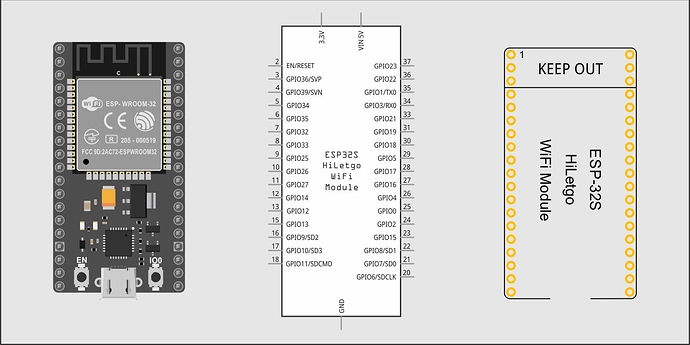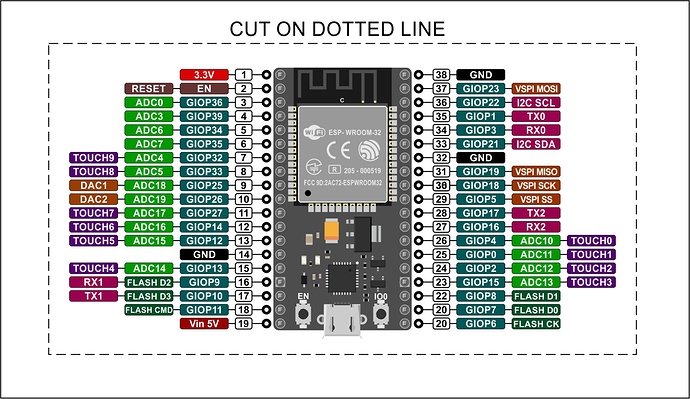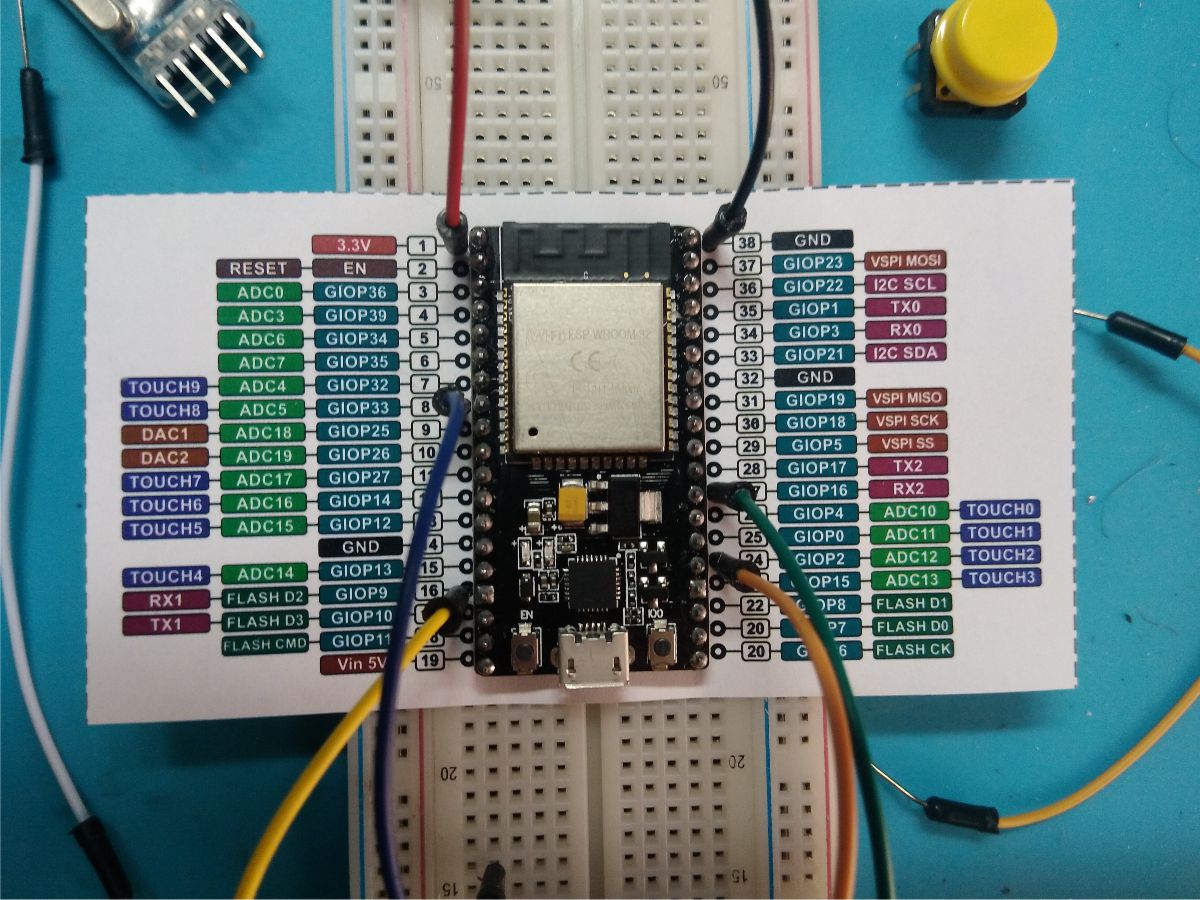There are several different ESP32 development boards on the market, each of a different size and pinout. The ESP32S-HiLetgo is narrowest of the development board allowing for a row of sockets on each side of the breadboard.
ESP32S-HiLetgo: ESP32S_HiLetgo.fzpz (20.1 KB)
There are no pin numbers or gpio numbers on the top of the HiLetgo board making it a little difficult to locate the correct pin. To solve this problem, I drew up a pinout template. This template is for the ESP32S HiLetgo dev. board and likely will not match any other board.
To use the template, download and print the attach .fz file which contains the pinout template .pdf file. Cut the template out on the dotted line. Lay the template on the breadboard and punch the dev. board pins through the template aligning with the corresponding HeLetgo dev. board image. It may help to align the template by pre-punching a few of the pin holes through the template with the pin of a breadboard jumper wire first.
This is a .zip file… Please download and unzip to access the files.
ESP32S_HiLetgo_fzpz_file_and_template.fz (464.9 KB)
12 Likes
Wow - 3 years have gone by and no one has said WOW! Thanks for this great rendition of exactly what I needed. I was figuring I had an evening of modifying a 30-pin or 36-pin version to get to my version of the devkit. And here it is. Looks like a really well done part. I have designed a few from scratch and it’s a pain - I know - thanks for doing this part.
–roboBob
I do have the 38-pin version and figured I’d have to modify one of the smaller versions.
Oh - and the template punchthrough works GREAT too. Super idea. So much easier than just referencing a piece of paper nearby.
Thank you for doing this. It looks like a lot of work. Much appreciated.
I know it follows from the order of the pins, but in the drawing, pin 21 is missing.
Thanks bud. This is helpful to have.
Great information! Very much appreciated. I am still pretty new to ESP32. Can someone confirm for me that pins 20, 21, 22 at the bottom right of the drawing for the ESP32S are for on/off such as blinking an external LED or operating something such as a contact. Thanks
This looks exactly what I need, thank you!
Great job!!!, it’s very usefull for me.
1 Like
Just found this!! Brilliant! Thank you!!


